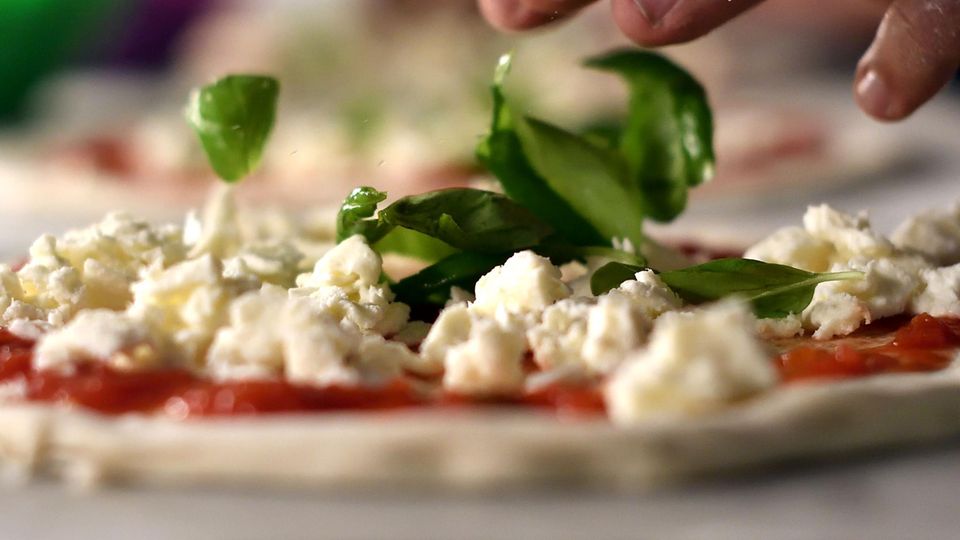The whole world loves pizza. But it took a while for the hearty round to become what we find on our plates today. A story about ancient Greeks, popes and American soldiers.
In the 20th century, pizza set out to conquer the world. Today the delicious specialty is one of the most popular dishes ever. A world without pizza is no longer conceivable. And the inventors of pizza? Of course, the Italians. Or? In fact, the concept of pizza is old, very old in fact.
If you want to research the origins of the dish, you have to go back about 2,000 years in the past. The first clues can be found among the ancient Greeks. “The term and the concept are very old,” says Diego Zancani. The Emeritus Professor of Medieval and Modern Languages at Oxford University is the author of “How We Fell in Love with Italian Food”. In an interview with “CNN” he explains that the ancient Greeks already knew “pissa” or “pita”: “A recent study linked the term ‘pizza’ to the various ‘pitas’ that exist throughout the Mediterranean region.”
From the ancient “Pissa” to pizza
However, this original form of the ancient “Pissa” was not what we understand by pizza today. Rather, it was a bread that was fried or baked, “possibly with spices on it.” This is also confirmed by another source. A rental agreement from 997 also mentions pizza.
The owner of the house, which was north of Naples, was promised pork and pizza. In this case too, says Zancani, pizza should be interpreted as a piece of bread. And then there is also a pope who liked to eat pizza around 1570. However, his chef’s recipe is surprising; it contains almonds and sugar. According to Zancani, it was “essentially a cake.”
It took a while until the “piss” turned into pizza. The fact that it looks the way it does today is largely due to an imported product. In the middle of the 18th century the tomato came to Naples and probably also to bread. News of the dish then spread rapidly. It was mainly the tourists who carried the message about the delicacy to all over the world, including well-known people like Carlo Collodi, who wrote “The Three Musketeers”. The author wrote enthusiastically about the different variants and the variety of toppings.
Street food of the common people
Pizza, that was street food. A dish for the common people. But it quickly found its way into the courtyards. King Ferdinand is said to have even owned a brick pizza oven. “It was a poor man’s meal, but he obviously enjoyed it,” Zancani said.
He wasn’t the only monarch to fall in love with pizza. One of the most popular pizzas still bears the name of an Italian queen. As the story goes, Margarita really wanted to try the local specialty when she visited the city in 1889. At the best pizza maker in the city at the time, Zancani knows she had the choice of three varieties: “White with pork bacon, caciocavallo cheese and basil; olive oil and anchovies; and tomatoes, mozzarella and basil. The story goes that the queen chose the third , because it reminded them of the flag of Italy.” Since then, the “Margherita” pizza has borne her name and its triumphal march around the world gained momentum.
“Pizza is Naples and Naples is pizza”
Naples is still considered the pizza city par excellence, and the dish has become the Neapolitan flagship. “As I like to say, Neapolitan pizza has no inventors, fathers or owners – it comes from the ingenuity of the Neapolitans. Pizza is Naples and Naples is pizza,” describes the president of the Associazione Verace Pizza Neapolitana (AVPN), Antonio Pace Sheet.
But it was neither the Neapolitans nor the kings who helped pizza gain global recognition. It was the Italian emigrants who brought the dish to the New World at the beginning of the 19th century. Pizza got another boost after the war, when American soldiers brought their new culinary love back home in the form of recipes. In the United States, the simple dish became a global hit. “The Americans say that pizza was invented by the Neapolitans, but it was brought to the world by the Americans. I agree,” says Zancani.
A landmark of Naples
While the number of pizza makers in the USA increased and more and more creations ended up on the plate, in Italy pizza remained a local specialty, a niche dish, for a long time. “Pizza remained a Neapolitan thing for many years – before the Second World War it was little known north of Rome, and it was not an immediate success. That only came with internal migration in the 1950s and 1960s,” says Zancani.
Pizzerias opened all over the country. The Neapolitan style was pushed into the shadows. “Our fear was that with the worldwide spread of this type of pizza, the original Neapolitan recipe could be forgotten,” explains Pace. In order to protect the original, he once founded the association AVPN, which has been training pizza makers since the mid-80s checks the products for authenticity.

He explains: “We have always said that the quality of a real Neapolitan pizza is linked neither to the dialect nor to the nationality of the pizzaiolo, but to a production method that has no secrets – although many people would like to believe that.” Neapolitan pizza impresses with its simplicity and few ingredients. The dough: water, flour, salt and yeast – no fats, no sugar, about 12 hours resting time. Baking takes place in a wood-fired oven.
“We never said that Neapolitan pizza is the best; we just emphasize that it is different,” says Pace. Whether pizza Hawaii, cheese crust or Chicago style. For Pace, every variant has its justification. Nevertheless, he doesn’t miss a little dig: “The American style is just different – the same goes for the ingredients. The Hawaiian pizza with pineapple is a strange concept, but if you like it, good. Yes, it is in a way a travesty, but most food is a travesty in some ways.”
Source: CNN



